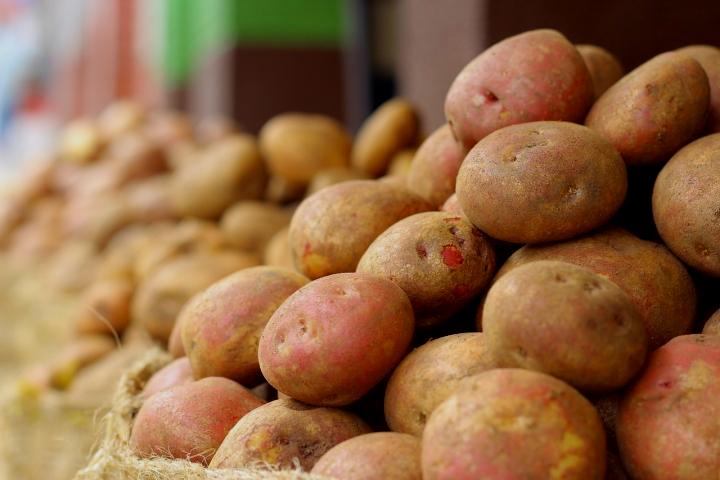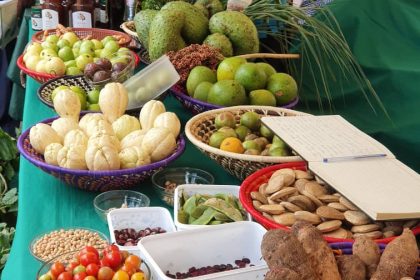Government works with partners to lift potato output

Increased production of tubers, such as potatoes, can help improve rural incomes, but only if farmers come together to exploit economies of scale to meet growing urban demand.
Potatoes are mostly grown in Uganda’s western highlands on numerous small neighbouring plots which limits mechanization making the hoe the main implement.
According to FAO, the United Nations food agency, Uganda’s currently produces 165,000 tonnes of potatoes annually, a sharp fall from the 600,000 tonnes produced in the early 1970s.
“If they (farmers) are in a cooperation or joint farmers group, this land can be used as one big piece to produce more harvests that will be marketed at once hence enhancing the farmers bargaining powers and a better price for their products,” Christopher Kibanzanga, a junior minister in the agriculture ministry said this week.
He was speaking at a two-day regional workshop on ‘Market Linkages through inclusive Business Models in the Roots and Tubers Value chains in Africa’ in Kampala. Just over 50 pc of total national production comes from the intensely farmed Kabale highlands.
Kibanzanga said Irish potatoes and cassava are important sources for both nutrients and are an important ingredient of Uganda’s food security. He said the government is already working with development partners like FAO to ensure that small and medium farmers in Kisori, Kabale and other parts of Uganda receive training on value addition, marketing strategies and pre-harvest to improve their earnings.
Government wants to commercialise tuber and root production to develop a supply-chain more responsive to market conditions on top of more value-addition.
FAO says Uganda is the third largest producer of potatoes in East Africa after Rwanda and Kenya, and its higher altitude areas are well placed to benefit from growing demand for potato products in the region. There is a general positive trend in production of potato due to slight growth in acreage and yield, but productivity is still lower than potential yields.
Antonio Querido, the FAO Representative in Uganda said there is need for continued financial and technical support for the farmers.
Querido said Uganda’s Roots and Tubers sector has plenty of potential if better supported to ease poverty, famine and malnutrition across the country.
“The objective of this project is to improve the livelihoods of small producers engaged on the roots and tubers value chains through the promotion of linkages to domestic and regional markets. Even after the project stops, we hope that the successes of this project will continue to manifest as we work together towards making this sector one of the crucial ones in Uganda and Africa at large,” he said.
The Workshop is being attended by farmers, government officials from seven African countries of Benin, Cameroon, Cote d’ Ivoire, Ghana, Malawi, Rwanda, Uganda and Rome who are part of the FAO’s project on ‘ Strengthening linkages between small actors and buyers in the Roots and Tubers sector in Africa’ that is being financed by EU and ACP.
Uganda has been a beneficiary of a multinational FAO-backed project intended to develop farmers’ capacity to grow tubers. Emphasis has been on attaining sustainable production and improving quality. The European Union financed project ended last year and the workshop was part of a review process.
The workshop was attended by farmers, government officials from seven African countries including Benin, Cameroon, Cote d’ Ivoire, Ghana, Malawi and Rwanda, There were also representatives from the FAO headquarters in Rome.

 100+ Accelerator selects Ugandan startup Yo-Waste to pilot glass recycling at Nile Breweries
100+ Accelerator selects Ugandan startup Yo-Waste to pilot glass recycling at Nile Breweries
 With eyes on oil and gas, France pledges USD 3 billion investment in Uganda
With eyes on oil and gas, France pledges USD 3 billion investment in Uganda
 Uganda urged to pitch for organic produce during NAM Summit
Uganda urged to pitch for organic produce during NAM Summit
 NOGAMU’s Namuwoza tapped to lead bid for increased intra-African trade in organics
NOGAMU’s Namuwoza tapped to lead bid for increased intra-African trade in organics
 From 3 padlocks to a click: Sipi Organic’s long walk to digital banking
From 3 padlocks to a click: Sipi Organic’s long walk to digital banking
 Nile Breweries launches UGX 4Bn barley processing facility in Kween district
Nile Breweries launches UGX 4Bn barley processing facility in Kween district
